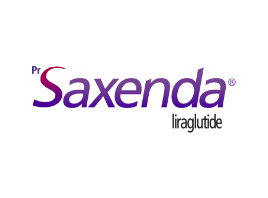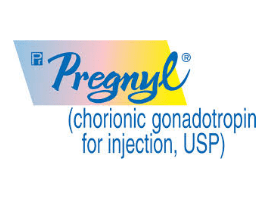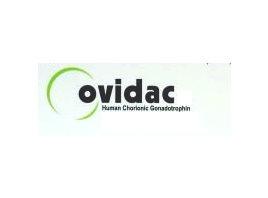- Your cart is empty
- Continue Shopping
Product

Lucentis (Ranibizumab)
$0.00
- Canadian Pharmacy Online Pharmacy | Online Canadian Pharmacy
- Need More Information Call Us 1-833-356-6337
Lucentis (Ranibizumab)
What is Lucentis (Ranibizumab)?
Lucentis belongs to a group of medications called anti-VEGF (vascular endothelial growth factor) agents and is used to treat various eye disorders. Lucentis is a product of Genentech, a pharmaceutical company headquartered in San Francisco.
What is it used for?
Lucentis is indicated for the treatment of retinal damage in patients with wet age-related macular degeneration, diabetic macular edema (DME), myopic choroidal neovascularization (mCNV) secondary to pathologic myopia and edema resulted from macular edema following retinal vein occlusion (RVO). Apart from that, Lucentis is also effective in treating CNV caused by central serous chorioretinopathy, angioid streaks, and post-inflammatory retinochoroidopathy.
How to take this medication
Lucentis is intended to be injected intravitreally. The injection process should be carried out with aseptic techniques. Prior to injection, doctors should administer an anesthesia and a broad-spectrum microbicide. At the same time, the treated eye should be cleaned with a solution containing iodine. Lucentis should be administered into the white part of the eye (sclera). If the other eye needs to be injected, use a new vial to ensure sterility. The intraocular pressure should be monitored 30 minutes before and after injection. Wait for at least one month before injecting Lucentis into the same eye.
How does Ranibizumab work?
Lucentis is formulated with ranibizumab as the active ingredient. Once administered, ranibizumab attaches to the receptor binding site of VEGF-A. In models of vascular occlusion and ocular angiogenesis, VEGF-A has been shown to trigger leakage and neovascularization. It is believed that VEGF-A has a key role in the pathophysiology of macular edema following RVO, DME, DR, mCNV, and neovascular AMD. By binding to VEGF-A, ranibizumab effectively blocks the interaction between VEGF-A and its receptors (e.g. VEGFR2 and VEGFR1) on the endothelial cellular surface, thereby decreasing vascular leakage and endothelial cell proliferation. At the same time, Lucentis helps to prevent the formation of new blood vessels.
Dosage
Lucentis comes in two strengths, which are 0.3mg (6mg/ml) and 0.5mg (10mg/ml). It is supplied in a disposable glass vial or prefilled syringe. The dosage of Lucentis varies depending on the treated indication. For example, when used in the treatment for macular degeneration and macular edema following RVO, 0.5mg of Lucentis should be injected intravitreally into the eye every 28 days (once a month). When used to treat DME or diabetic retinopathy with DME, a dose of 0.3mg should be used instead (with the same dosing schedule).
Lucentis side effects
Being FDA-approved, Lucentis has a good safety profile and is well tolerated by most patients; however, some patients may experience the following side effects.
Some of the common adverse effects of Lucentis are
- puffy eyelids, dry eyes and watery or itchy eyes
- eye irritation or pain or sensation of having something in the eye
- nausea, sore throat, sinus pain and cough
- blurred vision
What is Lucentis (Ranibizumab)?
Lucentis is an intraocular medication containing the active ingredient ranibizumab used to treat various degenerating eye conditions that cause vision loss. Ranibizumab is an antibody fragment that selectively binds to the human vascular endothelial growth factor A (VEGF-A) protein. This form of Lucentis is a sterile clear colorless to pale solution for injection, and comes in a clear, colorless glass vial. It is administered as an injection into the eye. The recommended dose is 0.5mg, given every 1–3 months, according to the therapeutic indication.
What is Lucentis used for?
Lucentis prevents further growth and leakage of newly formed blood vessels in the eye, which are contributing factors to retinal damage seen in eye diseases like wet age-related macular degeneration (AMD), diabetic macular edema (DME), choroidal neovascularization (CNV) secondary to pathologic myopia (PM), and CNV due to other causes. Lucentis binds to and inhibits the activity of VEGF-A, a retinal protein involved in endothelial cell proliferation and neovascularization.
Why use it?
Lucentis has been proven to slow the progression of vision loss, improve vision, and, thus, restore the ability to perform visual activities, like driving and reading. Anti-VEGF drugs like Lucentis are very effective treatments for wet AMD and represent first-line therapies for these types of eye diseases.
What is Lucentis (Ranibizumab)?
Lucentis is a prescription medication containing ranibizumab which is designed to be administered via injection into the eyes. It stops the action of vascular endothelial growth factor A which is one of the main culprits in new abnormal blood vessel formation in the eyes that contribute to various eye diseases. Lucentis is supplied in single-use prefilled syringes that provide 0.05ml for intravitreal injection at a concentration of 10mg/ml.
What is it used for?
Lucentis is used in patients diagnosed with neovascular (wet) age-related macular degeneration, macular edema after retinal vein occlusion, diabetic macular edema, diabetic retinopathy, and myopic choroidal neovascularization.
Why use Lucentis?
Multiple studies were performed in verifying the efficiency of Lucentis. One study compared 222 patients receiving Lucentis to 55 patients who did not receive Lucentis for myopic choroidal neovascularization. At the end of the three-month study, 40% more patients receiving treatment with Lucentis improved by having the ability to see 15 or more letters on an eye chart. For patients with retinal vein occlusion, a six-month study of 263 people found that there were 61% experienced an improvement when treated with Lucentis.
Patients can opt for three monthly treatments leading to less frequent dosing over time, as opposed to continuous monthly dosing. For patients with myopic choroidal neovascularization, monthly treatments are given for up to three months and then as needed. Other indications are usually treated with monthly injections.
Manufacturer: Novartis
IMPORTANT NOTES:
The information contained on this website is intended as an educational aid only. It is not intended as medical advice for individual conditions or treatment. It is not a substitute for a medical exam, nor does it replace the need for services provided by medical professionals. Talk to your doctor, nurse or pharmacist before taking any prescription or over the counter drugs (including any herbal medicines or supplements) or following any treatment or regimen. Only your doctor, nurse, or pharmacist can provide you with advice on what is safe and effective for you.





